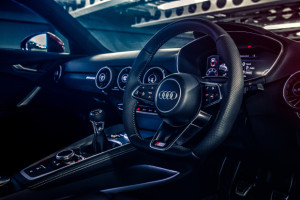The humble internal combustion-engine car has, in truth, not changed much in quite some time.
The advent of systems such as anti-lock brakes (ABS) and stability control systems (SCS) are among the only fundamental changes since the second half of the 20th century when the current primary platform design stabilised. Four wheel drive, variable valve timing, fuel injection and even hybrid power and drive systems in general availability are all surprisingly long in the tooth, at around 70, 35, 58 and 20 years respectively.
However, manufacturers are currently looking for ways to integrate widely available technologies in ever more useful ways that not only enhance performance and safety, but also usability and enjoyment. This goes beyond just entertainment or connectivity, and into genuine systems integration.
Long-time readers may recall from 2011, that we reviewed the Audi A6 C7, when Audi introduced its Multi Media Interface (MMI) that allowed the car’s own 3G connectivity to be shared via Wi-Fi tethering while still conducting a voice call. This was aimed squarely at the professional or executive who was on the road and needed full capabilities without having to resort to the ropey free Wi-Fi of a Starbucks or other such purveyor of sub-standard coffee.
Virtual cockpit
Well, fast forward to late 2014 and the latest generation of the TT sports car now gets the latest developments in display, interactivity and connectivity to produce the Audi Virtual Cockpit with Connect.
This is based around a 312mm (12.3”) full colour TFT panel where the dashboard instruments would be, driven by two quad-core processors. The steering wheel sports full controls, as does the centre console, which also features a navigation click wheel and a draw pad.
Whereas previous models had a pad on the console that allowed the user to draw letters, characters and digits to interact with the systems, now the pad is integrated with the click wheel, reducing clutter and making interaction even more intuitive.
The View button on the steering wheel switches the cockpit display between full size display of the primary instruments, rev counter and speedometer, with whatever else in the small space between, and a view where the primary instruments are reduced giving a large central display for whatever function is highlighted, such as navigation, communication, information or entertainment.
While the bulk of the above is as expected, the navigation, information and entertainment side of things have moved on from the earlier MMI, to what is now called Audi Connect. This is essentially a cloud-connection direct to several specific data services, as well as the Internet.
Navigation is via Google Earth and allows you to interact with the service online and then send routes, points of interest, and the like, direct to the car for reference. The cockpit screen displays the satellite image view as you drive, if desired, and is actually very beneficial as when overlaid with live traffic information, speed limits and more. Far from a distraction, this adds to the driver’s awareness of general road conditions and is akin to having a co-driver in rally-style constantly feeding information about conditions and what to expect ahead.








Subscribers 0
Fans 0
Followers 0
Followers